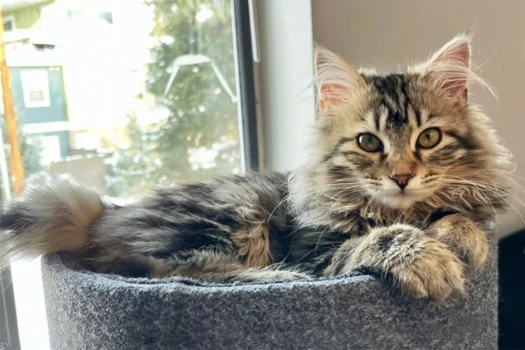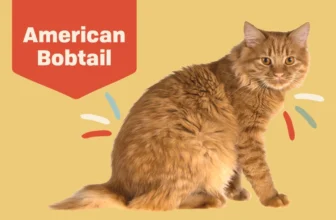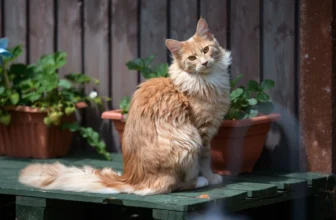Welcoming a new furry friend into your home is a special experience, especially when it’s an American Bobtail. These feline companions are known for their strength, agility, and playful personalities, making them a popular choice for pet lovers. However, creating a suitable environment for your American Bobtail is crucial to ensure they are happy and healthy. From understanding their physical and personality traits to training and grooming, there are a variety of factors to consider when making your feline friend feel right at home. In this comprehensive guide, we’ll explore step-by-step how to create an adaptable environment for your American Bobtail.
Understanding American Bobtails
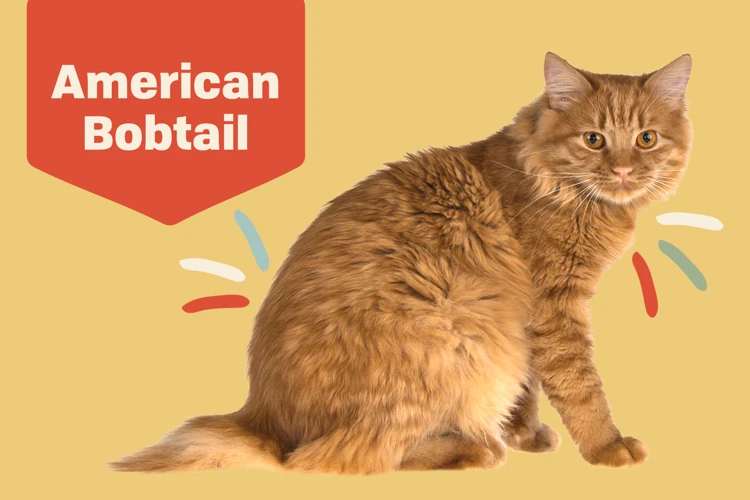
Understanding American Bobtails
Before creating an adaptable environment for your American Bobtail, it’s important to understand this unique breed of cat. From their personality traits to their physical characteristics and living requirements, there are many factors to consider when bringing a Bobtail into your home. Factors like adaptability and the role of socialization play a big part in the well-being of your furry friend. Additionally, if you’re bringing a Bobtail into a new home, there are special steps you should take to ensure that they feel comfortable and safe. Let’s take a closer look at American Bobtails and what you need to know to create an environment that meets their unique needs.
Personality Traits
American Bobtails are known for their unique personality traits, making them a popular choice for pet owners. These cats are a perfect combination of intelligence, playfulness, and loyalty. Here’s a table highlighting the personality traits of an American Bobtail:
| Trait | Description |
|---|---|
| Intelligence | American Bobtails are intelligent cats that can be easily trained. They love learning new tricks and can also be taught how to walk on a leash. |
| Playfulness | These cats are extremely playful and have a great sense of humor. They love playing with toys and will keep you entertained for hours with their antics. |
| Loyalty | American Bobtails are known for their loyalty. They form strong bonds with their owners and are fiercely protective of them. They also get along well with other pets in the family. |
| Adaptability | These cats are highly adaptable and can adjust to new environments and situations. They are great traveling companions and can easily adapt to new homes. |
| Independence | American Bobtails are independent cats that enjoy their alone time. However, they still need plenty of attention and love from their owners. |
It’s important to note that while these traits are common in American Bobtails, each cat is unique and may display different personality characteristics. As a pet owner, it’s important to understand and respect your cat’s personality to create a strong bond with them.
Creating an adaptable environment for your American Bobtail is crucial to their happiness and well-being. Check out our article on Creating an Adaptable Environment for Your American Bobtail for tips and suggestions on how to create the perfect living space for your furry friend.
Physical Traits
American Bobtails are known for their distinctive physical characteristics that make them stand out from other cat breeds. Strong and muscular, they have a short tail that is often described as “bobbed” or “cropped”. Their coat comes in a range of colors and patterns, including tabby, calico, and solid shades. Below are some of the key physical traits of American Bobtails:
- Short Tail: As mentioned earlier, the most striking physical feature of American Bobtails is their short, bobbed tail. This unique trait is present in varying degrees and is caused by a genetic mutation.
- Muscular Build: American Bobtails have a muscular and athletic build. They are medium to large in size and can weigh anywhere from 7 to 16 pounds.
- Coat: Their coat is dense and can be either short or medium in length. It is water-resistant, which makes it perfect for cats who enjoy playing in water or live in humid environments.
- Ears: American Bobtails have tufted ears, which give them a wild and rugged appearance. The tufts are usually white but can also be colored to match the rest of the coat.
- Paws: Bobtails have large, round paws with tufted toes. This not only adds to their adorableness but is also helpful in colder climates where cats need extra insulation.
It’s important to understand these physical traits when creating a living space for your American Bobtail. For example, their love of water may mean that providing a shallow water bowl or a water fountain could be a great source of entertainment for them. Additionally, their muscular build means that they require plenty of space to play and climb. Finally, their tufted ears and toes may require more attention during grooming sessions.
Creating an adaptable environment for your American Bobtail requires careful consideration of their specific physical traits. By taking these traits into account, you can ensure that your cat is happy, healthy, and thriving in their living space.
Living Requirements
Strong and muscular, the American Bobtail is a naturally active breed that needs plenty of space to move around. They do well in larger homes with outdoor access or smaller homes as long as there are opportunities for play and exercise. This breed is adaptable to many different environments and living situations, but it’s important to provide a few key requirements for their health and well-being.
One of the most important requirements for American Bobtails is space. They are naturally active and need plenty of room to run and play. If you live in a smaller apartment, make sure to provide plenty of climbing and scratching opportunities to keep your cat entertained. A cat tree or scratching post can help them stretch their muscles and keep them from feeling cooped up.
Temperature is also an important consideration for American Bobtails. They do best in climates that don’t get too hot or too cold. If you live in an area with extreme temperatures, make sure to provide plenty of air conditioning or heating to keep your cat comfortable. This breed is adapted to a range of environments, but it’s important to keep their living space at a comfortable temperature.
Another important living requirement for American Bobtails is privacy. They appreciate having a space that they can retreat to when they’re feeling stressed or overwhelmed. Make sure to provide a few safe areas where your cat can relax and feel secure. This could be a cozy hiding spot under a bed or a covered cat bed in a quiet corner.
Finally, it’s important to provide American Bobtails with plenty of mental stimulation. These cats are intelligent and curious, and they need plenty of playtime and toys to keep them mentally engaged. Consider offering a variety of toys, such as puzzle toys and interactive feeders, that will challenge your cat’s mind and keep them entertained.
| Living Requirements for American Bobtails | Details |
|---|---|
| Space | Provide plenty of room to run and play or climbing and scratching opportunities if living in a smaller home. |
| Temperature | Keep living space at a comfortable temperature. |
| Privacy | Provide safe areas for your cat to retreat to when feeling stressed or overwhelmed. |
| Mental Stimulation | Offer a variety of toys that will challenge your cat’s mind and keep them entertained. |
While American Bobtails are adaptable to different environments and living situations, it’s important to provide them with space, a comfortable temperature, privacy, and mental stimulation. By meeting these living requirements, you can ensure that your American Bobtail is happy, healthy, and thriving in their home environment. If you are considering adopting an American Bobtail, be sure to learn about bringing them into a new home and the environments that they do well in.
Create an Adaptable Environment
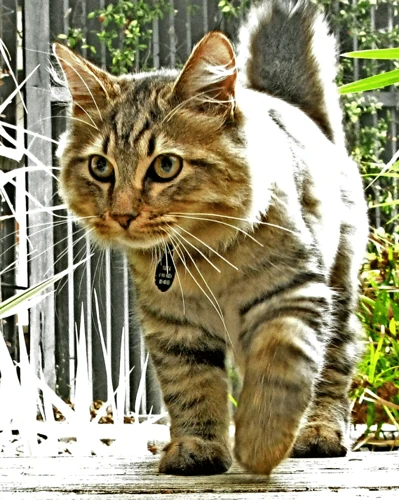
As adaptable creatures, American Bobtails are known to easily adjust to their surroundings. However, creating a conducive environment for these pets can be challenging especially in situations that require flexibility. It is important to understand that every American Bobtail is unique and their environment should reflect their individual needs. The following suggestions will help you create an environment that your American Bobtail will not only enjoy but thrive in.
Safe Spaces
Creating safe spaces throughout your home is essential in providing your American Bobtail with a sense of safety and security. Your pet should have access to a quiet area where they can retreat when they feel overwhelmed or anxious. This could be something as simple as building a small, enclosed space or providing them with a cozy bed within a secluded nook.
Toys and Enrichment
American Bobtails are naturally curious and intelligent cats, and without the right toys and enrichment, they can easily become bored and destructive. Providing your pet with a variety of toys that cater to their play style is necessary for maintaining their physical and mental well-being. You can also introduce interactive toys that will challenge your pet both physically and mentally, such as puzzle feeders or scratching posts.
Don’t miss to learn more about adaptability of American Bobtails when compared to other cat breeds.
Safe Spaces
Creating a safe space for your American Bobtail is essential for their well-being. These cats like to have their own territory and feel secure in their surroundings. Here are some tips for providing a safe space for your American Bobtail:
| Tip | Description |
|---|---|
| Designate a designated space | Set aside an area in your home exclusively for your cat, where they can retreat if they are feeling stressed or overwhelmed. This can be a quiet room with a cozy bed, some toys, and a litter box. |
| Provide vertical spaces | American Bobtails love to climb, so provide them with vertical spaces such as cat trees or shelves where they can relax and survey their surroundings. |
| Have hiding spots available | Place some hiding spots in various places around your home, such as cardboard boxes or tunnels. This will give your cat a sense of security and a place to retreat if they feel threatened or overwhelmed. |
| Place scratching posts around the house | American Bobtails love to scratch, so provide them with several scratching posts or pads around the house. This will not only keep them entertained but will also help to discourage destructive scratching on furniture. |
| Limit access to dangerous areas | Keep your American Bobtail safe by limiting their access to dangerous areas such as the garage, basement, or outside. Make sure all windows and doors are securely closed, and always supervise outdoor time. |
By following these tips, you can create a safe, comfortable, and adaptable environment for your American Bobtail, which will help them to thrive and live a happy life with their family. If you want to learn more about traveling with your American Bobtail, check out our article about American Bobtails as Travel Pets. Alternatively, if you want to know more about the adaptability of American Bobtails as family pets, read our article about Adaptability of American Bobtails as Family Pets.
Toys and Enrichment
Providing stimulating activities and toys is crucial to the wellbeing of your American Bobtail. Without proper enrichment, cats may become bored, which can lead to destructive behaviors or excessive weight gain. Here are some ideas for toys and enrichment activities that will keep your Bobtail engaged and entertained.
- Interactive Toys: Interactive toys, such as wand toys or puzzle feeders, are great for engaging your American Bobtail’s mind and senses. These toys encourage natural hunting behaviors and provide mental stimulation.
- Cat Trees: A cat tree is a wonderful addition to any home with a cat. They provide a high perch for your Bobtail to survey their environment and a place to scratch and play.
- Scratching Posts: Scratching posts are essential for keeping your Bobtail’s nails in good condition and preventing them from scratching your furniture. Providing multiple scratching posts throughout your home will also help prevent boredom.
- Cardboard Boxes: Believe it or not, something as simple as a cardboard box can provide hours of entertainment for your American Bobtail. Provide a few boxes throughout your home for your cat to play and hide in.
- Rotation: Rotating your cat’s toys is a great way to keep them interested and engaged. Simply put some toys away for a few days or weeks and then rotate them back in. This will keep your cat from becoming bored with their toys.
- Catnip: Some cats are sensitive to catnip and others aren’t interested in it at all. However, if your cat enjoys catnip, it can provide great enrichment. You can purchase catnip toys or grow your own catnip plant.
Remember, it’s important to provide a variety of toys and activities to keep your American Bobtail happy and healthy. Observe your cat’s preferences and adjust their toys and activities as needed to keep them engaged and mentally stimulated.
Feeding and Hydration
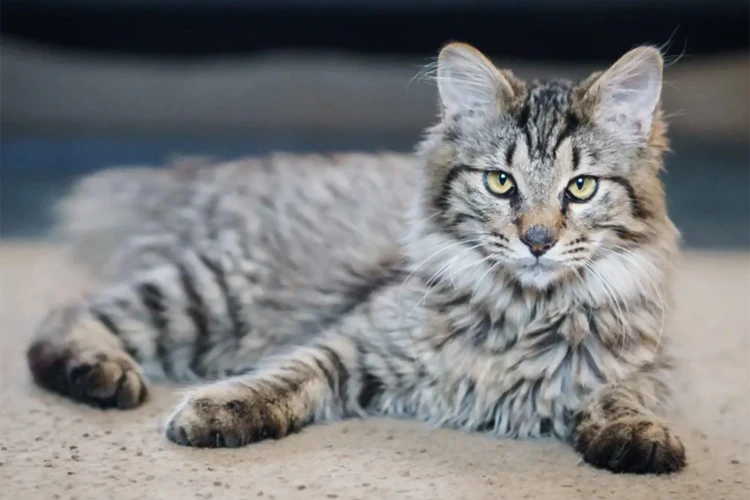
As pet owners, one of our chief concerns is making sure that our furry friends are eating healthily and staying hydrated. When it comes to American Bobtail cats, feeding and hydration are no less important. To keep your Bobtail happy and healthy, it’s essential to provide them with the proper nutrition and hydration that meets their unique requirements. In this section, we’ll delve into the dos and don’ts of feeding and hydrating your American Bobtail. So, let’s dive in and learn about the essentials of feline nutrition!
Choosing the Right Food
The key to a healthy American Bobtail is providing them with proper nutrition. When it comes to choosing the right food for your furry friend, there are a few things to consider.
Quality Ingredients
First and foremost, it’s important to choose a food with high-quality ingredients. Look for a brand that uses real meat as the primary ingredient, rather than fillers like corn or wheat. Additionally, avoid artificial preservatives, colors, and flavors.
Nutritional Needs
American Bobtails have specific nutritional needs, so it’s important to choose a food that’s formulated for them. Look for a formula that’s high in protein, as this is important for muscle maintenance and repair. Additionally, a balanced blend of fats and carbohydrates will provide energy for your cat’s daily activities.
Age and Health
Consider your American Bobtail’s age and health when choosing their food. Kittens have different nutritional needs than adult cats, and senior cats may require a different formula as well. If your cat has any health concerns, such as a sensitive stomach or a history of urinary tract issues, talk to your veterinarian about specific dietary recommendations.
Wet vs. Dry Food
Another consideration is whether to feed your American Bobtail wet or dry food. Wet food can be beneficial for cats who need extra hydration, while dry food is convenient for pet owners and can help maintain dental health. Some cats do well on a mix of both wet and dry food.
Gradual Transition
When switching your cat to a new food, it’s important to do so gradually over the course of about a week. This will help avoid digestive upset and allow your cat’s system to adjust to the new formula.
By taking the time to choose the right food for your American Bobtail and considering their specific nutritional needs, you can help ensure they live a happy and healthy life.
H2O Needs
Providing proper hydration for your American Bobtail is crucial for their overall health and wellbeing. Here are some important considerations when it comes to fulfilling their H2O needs:
- Water source: Always make sure your cat has access to clean, fresh water. This can be achieved by providing a water bowl that is washed and refilled regularly, or by using a water fountain that constantly circulates and filters the water.
- Location: Cats are sensitive to their environment, so be mindful of where you place their water source. It should be away from their litter box and food bowl to avoid contamination. Additionally, some cats prefer drinking from a higher location, so consider placing the water bowl on an elevated surface.
- Monitoring: Keep an eye on how much water your Bobtail is drinking on a daily basis. A sudden increase or decrease in water consumption may indicate an underlying health issue that should be addressed by a veterinarian.
- Hydration alternatives: Some cats may prefer getting their hydration from wet food rather than water alone. Consider incorporating wet food into your Bobtail’s diet, or add water to their dry food to increase their water intake. However, it’s important to remember not to overfeed your cat as obesity can also cause health problems.
By following these tips and ensuring your American Bobtail has access to clean water and proper hydration, you can help keep them healthy and happy.
Grooming Your Bobtail
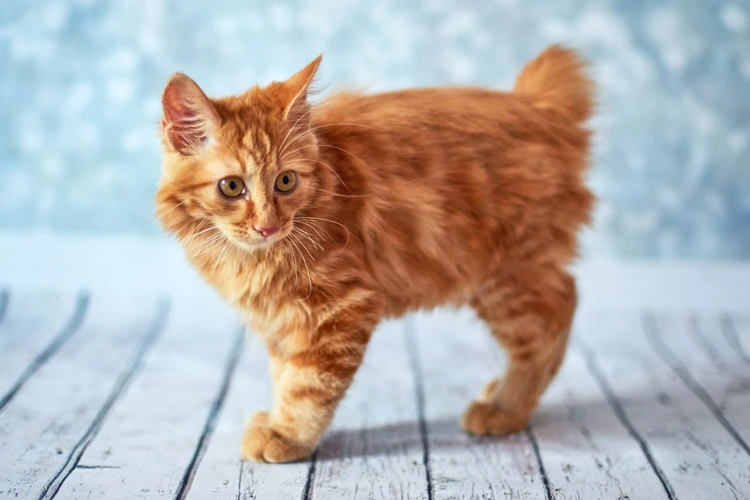
Keeping your American Bobtail well-groomed is essential for their overall health and well-being. Proper grooming not only keeps them looking and smelling their best but also helps prevent health issues such as skin infections and hairballs. As a responsible pet parent, it’s important to ensure that you are providing your furry friend with the appropriate grooming care they need. Let’s delve into some helpful tips for grooming your American Bobtail.
Coat Care
Maintaining your American Bobtail’s coat is crucial to keeping them healthy and comfortable. Here are some tips for proper coat care:
1. Brush regularly: American Bobtails have a short to medium length coat that is fairly easy to maintain. However, regular brushing is still necessary to remove loose hair and prevent matting. Use a soft brush or a comb that is designed for short-haired cats.
2. Bathe occasionally: While cats are known for their self-grooming abilities, American Bobtails may benefit from an occasional bath to remove any excess dirt or oils from their coat. Use a cat-specific shampoo and follow the instructions carefully.
3. Check for fleas and ticks: American Bobtails are prone to flea and tick infestations. Check your cat’s coat regularly for any signs of these pests and use a cat-safe flea and tick treatment if necessary.
4. Watch out for hairballs: Brushing your cat regularly can help prevent hairballs, but they may still occur. Make sure your cat has access to plenty of fresh water and consider using a hairball remedy if necessary.
5. Monitor for skin irritations: American Bobtails may be prone to skin irritations, particularly in areas where the fur is thinner such as around the ears or belly. Check your cat’s skin regularly for any signs of redness, swelling, or other abnormalities.
By following these simple tips for coat care, you can help keep your American Bobtail healthy and comfortable. Remember to always use cat-specific products and consult with your veterinarian if you have any concerns about your cat’s coat or overall health.
Paw and Nail Maintenance
It’s important to regularly maintain your American Bobtail’s paws and nails to ensure their overall health and comfort. Neglecting to do so could lead to painful infections or injuries that could have otherwise been avoided. Here are some key tips for maintaining your Bobtail’s paw and nail health:
| Tip | Description |
|---|---|
| Inspect paws regularly | Take the time to inspect your cat’s paws regularly, looking for any signs of cuts or injuries. This will allow you to address any potential issues before they become serious. |
| Trim nails every few weeks | Trimming your cat’s nails every few weeks can help prevent overgrowth and breakage, which could be painful for your Bobtail. Use proper nail clippers and be sure to avoid cutting the quick, which could result in bleeding and pain for your cat. |
| Provide appropriate scratching surfaces | Cats naturally need to scratch in order to maintain healthy nails, so providing appropriate scratching surfaces is important. This can be a scratching post or mat, or even cardboard boxes placed strategically around the house. |
| Keep paws clean | Regularly cleaning your cat’s paws can help prevent infection and irritation. Use a damp cloth to gently wipe your cat’s paws, being sure to check in between the toes for any debris or foreign objects. |
| Use cat-friendly products | When it comes to grooming and maintaining your American Bobtail’s paw and nail health, it’s important to use cat-friendly products. This includes items such as nail clippers, cleaning solutions, and topical ointments, which should all be designed specifically for use on cats. |
Remember, maintaining your Bobtail’s paw and nail health isn’t just important for their physical well-being, it can also help prevent behavioral problems that may arise when cats are uncomfortable or in pain. Take the time to regularly inspect and groom your cat’s paws and nails, and don’t hesitate to seek veterinary care if you notice any concerning symptoms or issues.
Caring for Your Bobtail’s Health
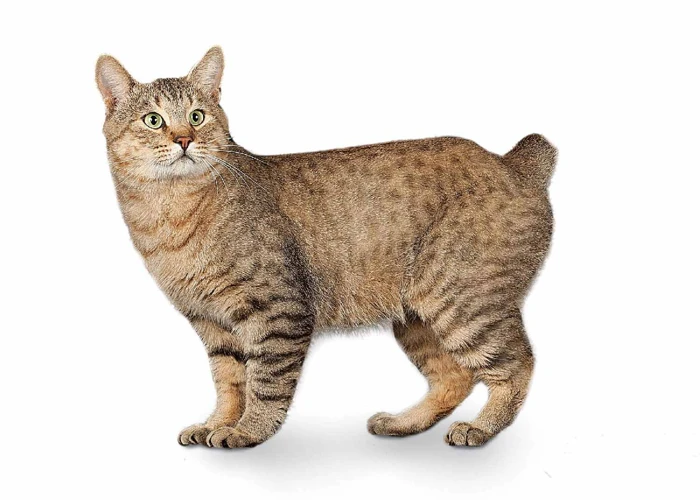
Keeping your American Bobtail healthy is essential to ensuring a happy life for your feline companion. The responsibilities of caring for your pet’s health go beyond simply feeding and grooming; regular visits to the veterinarian are crucial. Additionally, being able to recognize signs of illness early can make a significant difference in the successful treatment and long-term health of your pet. In this section, we will explore the best practices for keeping your American Bobtail healthy and happy for years to come.
Scheduling Vet Visits
One of the most important things you can do to care for your American Bobtail’s health is to schedule regular veterinary check-ups. These visits should occur on a yearly basis for healthy cats, but may need to occur more frequently for cats with health concerns or issues.
During a vet visit, your cat will undergo a comprehensive physical exam, including weight check, intra-oral exam, and blood work, among other assessments. The vet will also answer any questions you have about your cat’s health and help you understand what to look for in terms of signs of illness or disease.
Table: Recommended Veterinary Visit Schedule for American Bobtails
| Age Range | Frequency of Visits | Notes |
|---|---|---|
| 0-1 years | Every 4-6 weeks | Includes vaccinations, deworming and spay/neuter surgery |
| 1-7 years | At least once a year | May need more visits for chronic conditions or senior cats |
| 7+ years | Twice a year | May need increased preventative care and monitoring of diseases |
It is crucial to follow this schedule so that any health issues can be caught early and treated promptly. Preventative measures such as vaccinations and parasite control can also be implemented during these visits.
If you notice any changes in your cat’s behavior or physical condition between vet visits, do not hesitate to schedule an appointment. It’s always better to be safe than sorry when it comes to your furry friend’s health. By staying on top of your American Bobtail’s health, you can ensure a long and happy life for your pet.
Signs of Illness
As a loving pet parent, it is crucial to be aware of your American Bobtail’s health status. Being aware of the signs of illness helps you take prompt action and alleviate their pain. Here are some common signs of illness you should be aware of:
- Changes in Behavior: Your cat may begin to act differently, like becoming lethargic, withdrawing from socialization, or being aggressive. They might also display sudden mood changes.
- Changes in Appetite: If your cat suddenly stops eating or drinking, it could be a sign of a severe underlying health issue.
- Changes in Bowel Movements: Watch out for diarrhea, vomiting, or constipation. These conditions could lead to dehydration and nutrient loss.
- Respiratory Issues: Wheezing, coughing, sneezing, or breathlessness can indicate respiratory problems.
- Changes in the Urinary System: If your cat faces difficulty urinating or shows blood in the urine, it could indicate a urinary tract infection that requires care.
- Sudden Weight Loss: A sudden drop in weight could be a symptom of various ailments, like diabetes or worms.
- Changes in Physical Appearance: Be observant of physical changes like bumps, lumps, rashes, unusual hair loss, and wounds.
Remember, recognizing the signs of illness at the initial stage is key. Schedule regular vet appointments and be aware of any adverse behavioural or physical changes in your American Bobtail. Following a consistent routine helps keep your cat healthy and ensures that they receive the proper treatment if they do fall ill.
Train Your American Bobtail
Now that you have created a comfortable and suitable environment for your American Bobtail, it is time to focus on their training. This process plays a crucial role in their development and well-being. By training your cat, you can establish proper behavioral and litter box habits that will benefit both you and your furry friend. In this section, we will explore different training techniques that you can use to turn your American Bobtail into a well-behaved and obedient pet. Let’s dive in!
Litter Box Training
Litter box training is an essential part of keeping your American Bobtail happy and healthy inside your home. To ensure that your cat is litter box trained, follow these steps to create a positive experience for your furry friend.
Choose the Right Litter Box:
Make sure that the litter box you choose is big enough for your American Bobtail to move around comfortably. It’s essential to select a litter box with low sides so that your cat can easily climb in and out of it. You may want to consider getting an enclosed litter box to provide your cat with added privacy.
Choose the Right Litter:
The type of litter you choose can make a big difference in the success of litter box training. Some cats prefer a softer litter, while others prefer a coarser texture. You may need to experiment with different types of litters to find out what your American Bobtail likes. It’s important to keep the litter box clean and refreshed, as cats can be very particular about having a clean litter box.
Choose the Right Location:
Choose a location for the litter box that is quiet and private. A spot in your laundry room, bathroom, or even a corner in your bedroom would be ideal. Make sure that the litter box is far from your cat’s food and water bowls.
Train Your Cat:
To get your American Bobtail comfortable with using the litter box, initially, try confining your cat to a small area of your home or a single room. Place the litter box in this confined area and encourage your cat to use it. When your cat goes to the bathroom in the litter box, praise your cat and give them a treat.
Problem Solve:
If your American Bobtail refuses to use the litter box or has accidents outside of it, you may need to problem-solve the issue. Check to make sure that the litter box is clean and that you’re using the right type of litter. You might need to change the location of the litter box or add additional boxes.
It’s important to remember that litter box training takes patience and persistence. Your American Bobtail’s success in using the litter box is dependent on creating a positive environment that encourages good litter box habits.
Behavioral Training
The American Bobtail is a highly intelligent and social breed, which makes behavioral training an important aspect of their overall care. Below is a table highlighting some behavioral training tips to ensure a happy and well-behaved feline companion.
| Behavioral Training | Explanation and Tips |
|---|---|
| Positive Reinforcement | Using treats and verbal praise to reward good behavior can be more effective than punishment. This method focuses on reinforcing positive behaviors rather than punishing negative ones. |
| Clicker Training | A clicker training device can be used to signal to your cat when they have done something correct. This method is often used in combination with positive reinforcement. |
| Interactive Play | American Bobtails thrive on interactive playtime with their owners. This not only strengthens the bond between cat and human, but it also helps to release excess energy and prevent destructive behaviors. |
| Litter Box Training | Consistency is key when it comes to litter box training. Place the litter box in a quiet and private area, and ensure it is cleaned regularly. If accidents occur, use an enzymatic cleaner to remove the odor and discourage repeated incidents. |
| Discourage Destructive Behavior | If your cat displays destructive behavior such as scratching furniture, redirect their attention to a scratching post by placing it nearby. You can also use deterrents such as double-sided tape or citrus-scented sprays to discourage unwanted behavior. |
| Consistent Rules and Boundaries | It is important to establish consistent rules and boundaries with your American Bobtail from the beginning. This not only makes training easier, but it also helps to prevent confusion and anxiety in your cat. |
By following these behavioral training tips, you can create a comfortable and happy environment for your American Bobtail while also ensuring their well-being and good behavior. Remember to be patient and consistent, and always use positive reinforcement to encourage good behavior.
Conclusion
In conclusion, creating an adaptable environment for your American Bobtail is crucial for their overall wellbeing and happiness. From understanding their unique personality and physical traits to providing safe spaces and enriching toys, every aspect of your cat’s environment should be tailored to their specific needs.
Proper feeding, hydration, and grooming also play a vital role in keeping your Bobtail healthy and happy. Choosing the right food and providing access to clean water is essential, while regular grooming helps maintain their coat and paw health.
Regular visits to the vet, along with awareness of the signs of illness, are also crucial components of Bobtail care. And, of course, behavioral training and litter box training can help ensure that your cat is a happy and well-behaved member of the family.
In summary, taking the time to create an adaptable and enriching environment for your American Bobtail can pay off in countless ways. You’ll have a happy, healthy, and well-loved feline companion who brings joy to your life every day. So, start implementing these tips and tricks today and see the difference it can make for your furry friend!
Frequently Asked Questions
What kind of personality traits do American Bobtails have?
American Bobtails are known for being intelligent, playful, and affectionate. They also have a natural curiosity and can be quite vocal, making them great companions for those who seek an interactive pet.
What are some physical traits of American Bobtails?
Bobtails are usually medium to large in size, often having a muscular build, short tails, and tufted ears. Their distinct coat patterns can vary greatly, ranging from solid colors to spotted and patched patterns.
How can I provide a living environment that suits my American Bobtail?
Bobtails thrive in an adaptable environment where they have access to safe spaces, plenty of toys, and enrichment activities. They also require a balanced diet, regular grooming, and scheduled veterinary visits to maintain their health and happiness.
What kinds of safe spaces can I create for my American Bobtail?
You can create safe spaces for your bobtail by designating certain areas of your home as pet-friendly, such as a cozy bed, scratching post or toy playset. Also, consider baby gates and other containment devices to ensure your pet has ample room to explore while remaining safe and secure.
What kinds of toys and enrichment activities should I offer my American Bobtail?
Bobtails love interactive toys such as puzzle feeders, balls, scratching posts, and climbing structures. Enrichment activities like cardboarding, playing chase, and tug-of-war games also keep them engaged and happy.
What kind of food should I choose for my American Bobtail?
American Bobtails should have a well-balanced diet that includes adequate protein, essential amino acids, and healthy fats. Consider talking to your veterinarian about specific feeding recommendations based on your bobtail’s size, age, and overall health.
How much water should my American Bobtail drink?
Water is essential to your bobtail’s health, and they need a constant supply of fresh water. On average, cats should drink around 2.5 ounces of water per pound of body weight each day.
What can I do to take care of my Bobtail’s coat?
You can take care of your Bobtail’s coat by regularly brushing them. Use a brush that is suitable for their coat, and pay special attention to tangles and mats. For longhaired Bobtails, speak with your veterinarian about scheduling regular trims needed to maintain the coat’s health and appearance.
How can I help with paw and nail maintenance for my American Bobtail?
You can help your Bobtail’s paw and nail maintenance by keeping their nails trimmed and filing down any jagged edges or sharp points. Scratching posts also aid in keeping their nails filed down naturally, and regular paw checks ensure their pads are healthy and free from cuts or abrasions.
How often should I take my American Bobtail to the veterinarian?
To maintain your cat’s health and detect any potential issues, schedule regular visits with your veterinarian, usually once per year. Discuss your cat’s individual needs with your veterinarian to plan the best schedule and care regimen for your American Bobtail.

